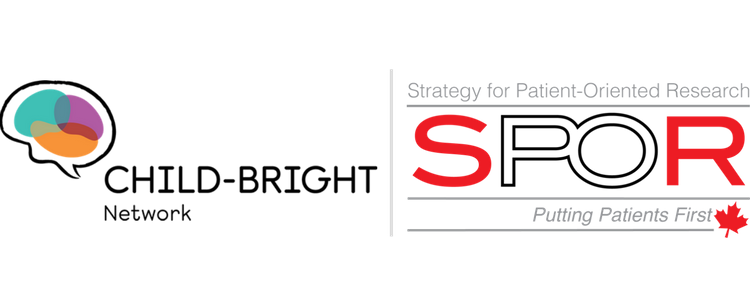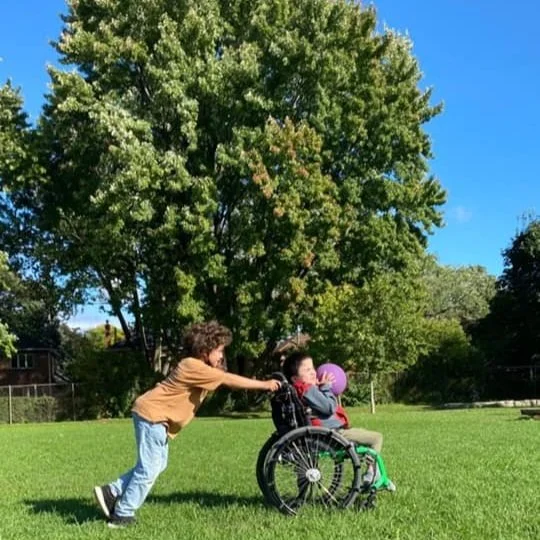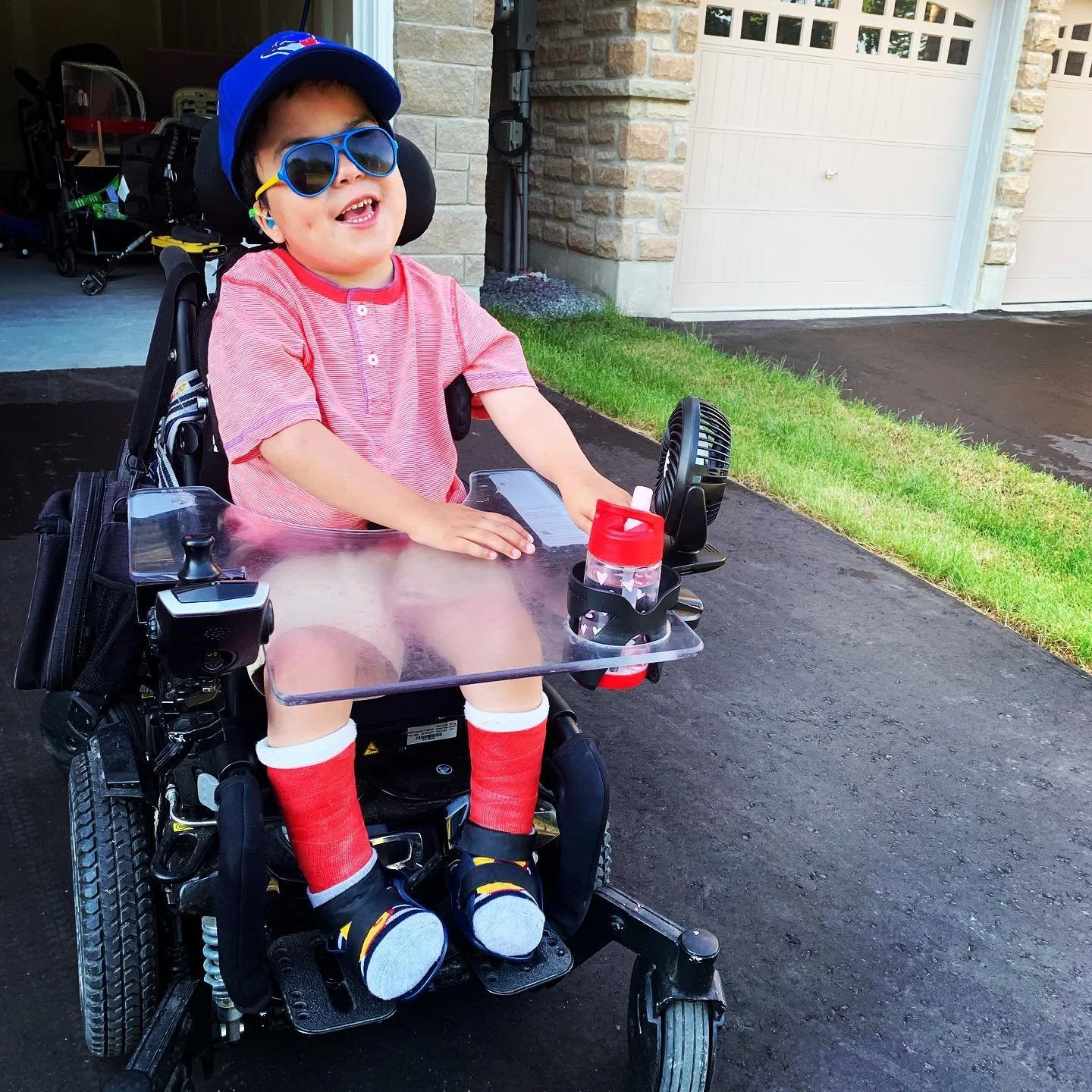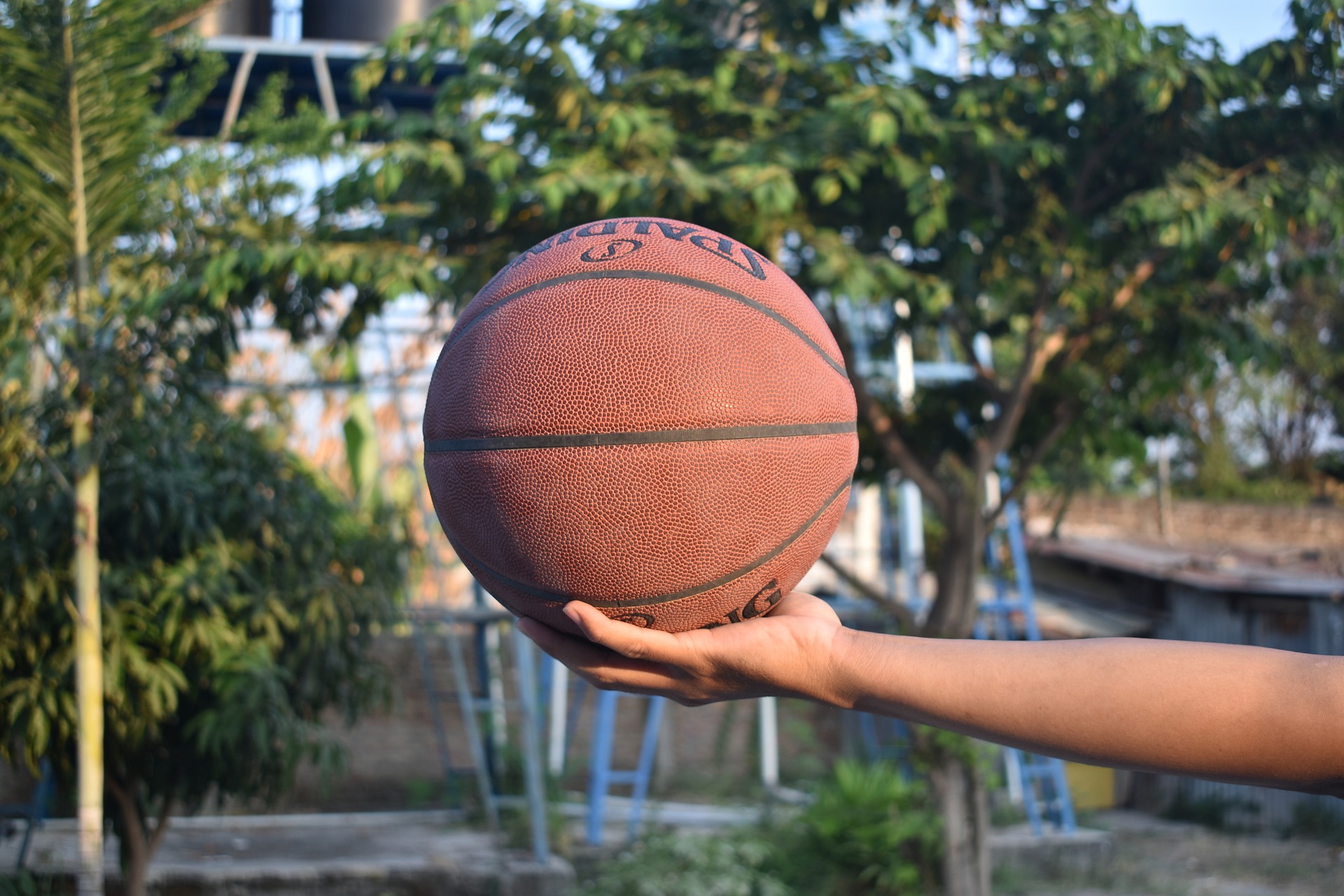By Samadhi Mora Severino
CHILD-BRIGHT parent research partner and equity, diversity, and inclusion (EDI) Advisor Samadhi Mora Severino sheds light on her experiences with bipolar disorder while supporting one child with severe cerebral palsy and another with ADHD and a learning disability. Stories like Samadhi’s highlight how mental health and disability are intrinsic parts of the human experience and do not diminish anyone’s value or impact.
Samadhi Mora Severino
My name is Samadhi, and I am an immigrant settler living in Toronto, Canada. I was born in, and am Indigenous to, Venezuela. I am also the mother of two children, who both live with brain-based developmental disabilities. My older son, Ethan, is 14 years old and has attention deficit hyperactivity disorder (ADHD) and a learning disability, while my younger son, Kian, is 12 and has severe cerebral palsy and intellectual disability. I have been involved with CHILD-BRIGHT as a parent research partner since 2016 and more recently as an EDI Advisor. I am also a PhD student in Health Policy and Equity, holding a master's degree in Critical Disability Studies, and two undergraduate degrees in Philosophy (specializing in bioethics and applied ethics) and Anthropology (focusing on medical anthropology – Indigenous Health and Disability Rights).
Alongside these academic pursuits, I live with a learning disability, ADHD, and a mental health diagnosis. In 2022, I was diagnosed with mild bipolar disorder 1, which became part of my journey as a mother of children with complex needs. Navigating life with a mental health diagnosis while raising children with brain-based developmental disabilities has been both challenging and empowering. This experience has deepened my understanding of the stigma that people living with mental health diagnosis, like bipolar disorder, often face. It has also shaped my advocacy and fueled my passion for creating more inclusive spaces for those with disabilities, mental health diagnoses, and/or Indigenous, Black, and equity-seeking identities.
First encounters with the mental health system
My first encounter with the mental health care system occurred in 2020, when I began seeing my incredible psychiatrist. Mental health care in Canada is complex and underfunded, and I have navigated the system in both British Columbia and Ontario. I am deeply privileged to have access to a psychiatrist—something not everyone is afforded. I am even more fortunate that my psychiatrist is trauma informed, open to learning and unlearning, and works collaboratively with me to ensure I receive the best care possible.
I was diagnosed with mild bipolar disorder 1, a mood disorder, in 2022. Navigating life with bipolar has not been easy; there is still a lot of stigma surrounding such a diagnosis. Before my diagnosis, I did not fully understand what bipolar disorder was. When I first heard the diagnosis, I struggled with shame and embarrassment. Mental health diagnoses like anxiety or depression are often more socially acceptable, but other conditions, including bipolar disorder, borderline personality disorder, and schizophrenia, are met with less empathy.
Following this diagnosis, I had to grieve the person I once was and adjust to the person I had become, all while working through my own internalized sanism. (Sanism refers to the discriminatory beliefs, actions, and policies that dehumanize people with mental health diagnoses.) Thankfully, I have received unwavering support, love, care from my mom and dad and my children.
After three years, I no longer feel ashamed to talk about being bipolar. I have grown to love and accept the person I am now with this diagnosis. I look back on all I have accomplished—being a mother, a parent research partner, an emerging researcher, an EDI Advisor, a friend, a daughter, and a human being. I remind myself that having bipolar does not define me; it is simply one aspect of who I am.
Entering the world of parenting
Ethan (left) and Kian
In 2009, before my son Ethan was born, our family’s geneticist told me that the hardest part of raising a child with a disability is how society perceives disability and the lack of government services to support families. Ethan had shown soft markers on his ultrasound that suggested he might be born with medical complexities or severe disabilities, but he was not. He was eventually diagnosed with ADHD and a learning disability.
I never forgot that conversation with our geneticist, or the compassion and empathy he showed us. This sentiment resurfaced when my younger son, Kian, was diagnosed with severe cerebral palsy on March 3, 2015. I will always remember that day, as it also marked the return of Kian’s genetic exome sequencing, leading to a second diagnosis of osteopathia striata with cranial sclerosis, a genetic disorder that affects bone development. It can also cause neurological conditions and hearing loss.
I did not truly understand what it meant to care for someone with severe physical disabilities until Kian was born. Parenting a child with severe disabilities is different from parenting a child with other disabilities or a child without a disability. Kian cannot independently carry out his activities of daily living; he requires assistance with everything from bathing and eating to dressing. He cannot sit, stand or walk. He uses a powerchair. He is a high user of health and social services which translates to many therapy and medical appointments.
Kian
Kian is also incredibly skilled with technology, funny, mischievous, and full of an adventurous spirit. He has an immense sense of empathy that I have rarely encountered in others. When I was diagnosed with bipolar disorder, I began to reflect on the stigma I was facing and internalizing, and how Kian’s daily experiences contrast with mine. I can mask my bipolar disorder, but Kian cannot hide his physical disability. At the same time, the assumptions people make about Kian, and the assumptions made about those with bipolar disorder, are disheartening. In that way, we share a profound connection.
As I think about Kian's future, I wonder how society will treat him as he grows older. The public’s empathy seems to shift dramatically when it comes to disabilities. While there is often more compassion for children, this empathy can lessen as someone reaches adulthood.
I always advocate with Kian in medical, educational, and social settings, prioritizing his voice and respecting his dignity, autonomy, and rights as outlined in the Declaration on the Rights of Disabled Persons and the Convention on the Rights of Persons with Disabilities. Over time, I have had to let go of my initial helicopter-parenting tendencies and allow Kian to live authentically, just as any child should. I remember one moment during a charity walk when Kian, at just four years old, wanted to tackle a steep hill in his power wheelchair. Initially, I hesitated, unsure if I should let him go. But I quickly reminded myself: If Kian were a typical four-year-old, would I have hesitated? Of course not. So, I let him go up the hill with his nurse. He had the time of his life, and the smile he wore that day is one I will never forget.
Looking back on that conversation I had in 2009 with our geneticist, I now see the truth in his words. The issue was never Kian; it was how the world saw him—or, more accurately, how it did not see him. Society, research, policies, and clinical guidelines do not always consider him in the way I did and the way Kian sees himself. This realization fueled my desire to participate in advocacy and research, pushing for improvements in health equity with Kian and others like him in Canada. It also led me to understand the importance of recognizing neurodivergence to create better support systems with children with disabilities and their families.
Fostering radical love in neurodevelopmental research
In All About Love, Black Critical Race Theorist scholar bell hooks discussed love as a combination of six ingredients: care, commitment, knowledge, responsibility, respect, and trust. She argued that love is crucial to social justice, and that radical love can unite us all, bridging social movements and advancing our collective progress.
In disability research, radical love can look like creating spaces where people can come together, feel safe, and express their authentic selves. Love can mean ensuring that our research outputs to the public are in plain language, making the findings clear, concise, and accessible to all. Love can mean that accommodation requests can be met without judgment and with support, care, and love. Love can mean working to understand, instead of reinforcing the stigma of having a mental health diagnosis.
My diverse lived experiences have deeply shaped my academic and professional journey, inspiring me to pursue meaningful research that bridges my personal and professional worlds. My PhD research focuses on the intersections of race and disability, specifically examining the experiences of BIPOC (Black, Indigenous, and people of colour) families with mental health diagnoses and their children with disabilities in the child welfare system. Guided by the Indigenous conceptual framework of Margaret Kovach, an Indigenous scholar of Nêhiyaw and Saulteaux ancestry from Treaty 4 and member of Pasqua First Nation, I draw on Indigenous epistemology, ethics, community, and the experiencing self in relationships.
“Every project I have been part of—whether as a CHILD-BRIGHT research partner or an emerging researcher—has profoundly changed me. ”
I believe research should transform not only the communities it serves but also the researcher. As Shawn Wilson, who is Opaskwayak Cree from northern Manitoba, aptly states in Research is Ceremony: “If research does not change you as a person, then you haven’t done it right.” Every project I have been part of—whether as a CHILD-BRIGHT research partner or an emerging researcher—has profoundly changed me. These experiences have fueled my advocacy with families and youth with neurodevelopmental disabilities, encouraging me to reimagine how research, policy, and practice can serve communities with radical love, empathy, and integrity.
At the core of my work is a commitment to radical love. My hope is that one day, society will no longer require people with disabilities and people with mental health diagnoses to prove their worth. Instead, they will be accepted for their authentic selves, free from the barriers of discriminatory research, clinical guidelines, policies, and laws.
Call to action
Here are steps we can all take to foster a more inclusive world:
Embrace inclusion with genuine love. Approach accommodations and accessibility with an open heart.
Commit to continuous learning. Be willing to unlearn harmful misinformation and embrace new, sometimes uncomfortable truths.
Avoid assumptions. Recognize that diagnoses vary widely, and there is no one-size-fits-all approach to understanding or supporting individuals.
Take accountability. Acknowledge mistakes, learn from them, and commit to growing together.
Respect the autonomy and dignity of people with mental health diagnoses. They can lead fulfilling lives and contribute meaningfully across many roles through society respecting their autonomy and dignity and ending the stigma.
Advocate for anti-discriminatory practices. Develop inclusive research, policies, and clinical guidelines that actively involve and centre the voices of those with lived and living experiences.
I invite you to reflect on how you can contribute to creating a world where inclusion, equity, and radical love are not ideals but everyday practices. Together, we can reimagine a society where everyone is empowered to live authentically and contribute meaningfully.















